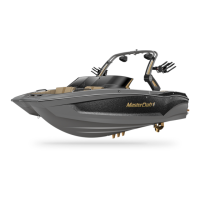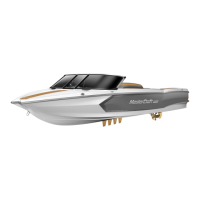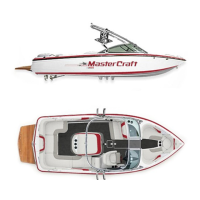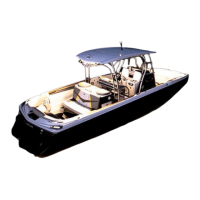AVIARA OWNERS MANUAL / 22
Personal Flotation
Devices (PFDs) and
Accessibility
Federal law requires at least one wearable Type I, II, III
or Type V Personal Flotation Device (“PFD”) for each person
on-board or being towed. A Type V PFD provides performance
of either a Type I, II or III PFD (as marked on its label) and must
be used according to the label requirements. In addition, one
throwable Type IV PFD must also be on board. As the owner,
obtaining the appropriate PFDs is your responsibility. You must
also determine whether people on-board, including those who
are underage, are required to wear PFDs when underway. Your
Aviara dealer can, and will be happy to, assist you with your
purchase of appropriate PFDs.
People on-board who cannot swim or who are not strong
swimmers, as well as children, should wear PFDs at all times.
• Wearable PFDs must be readily accessible in the boat.
• It should be possible to put on the PFDs within a reasonable
amount of time in case of emergency.
• PFDs should never be stowed in plastic bags, in locked or
closed compartments or have other gear stowed on top
of them.
• The U.S. Coast Guard, as well as Aviara, recommends the
wearing of PFDs at all times when the vessel is underway,
even though it is not a requirement. The best PFD is the
one that is worn and that can save your life. Inflatable PFDs
must have a full cylinder and all status indicators on the
inflator must be green, or the device is NOT serviceable,
and is NOT considered a usable PFD for anyone on-board
the vessel.
• Coast Guard-approved inflatable PFDs are authorized for use
on recreational boats by persons at least 16 years of age.
• Some states require children to wear PFDs at all times. Check
with your state boating safety officials for details. Be certain to
equip children with a PFD that is appropriate for the size of the
child. The label will indicate the weight limits for use.
NOTE: Requirements for coastal waters and inland waters differ.
Check with the local boating authorities for more information.

